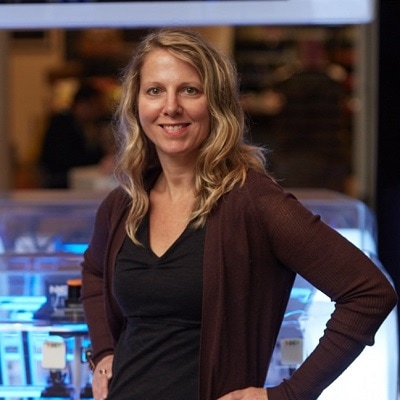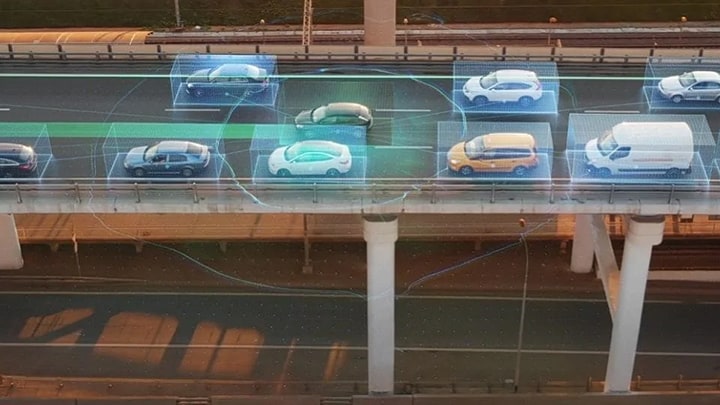Author

Monica Davis
Monica Davis writes about technologies and industry challenges that shape security and edge topics.

Most are familiar with the safety and convenience aspects that self-driving cars could offer, but if carmakers pour billions into self-driving cars—what’s in it for them? Influencers from disruptive automotive companies offered for their views on safety, cost and the payoff for carmakers during a special panel discussion at the June 12 NXP Connects event in Silicon Valley.

The long, winding road to win consumer trust
The race to get self-driving cars on the road has already seen devastating setbacks—namely the 2018 Uber incident, where a 49-year-old woman was tragically killed by a self-driving car. This is where the really tough questions sit, as we can’t ignore the fact that 1.3 million people are killed every year in car accidents, with 95% of them due to human error. Building safe autonomous cars appears to be the best chance we have in making our roads safer as carmakers aim to reduce that statistic.
Self-driving cars need to be safer than a human driver for people to trust them. And that’s where the industry’s stuck, as all carmakers are asking themselves the same question.
What is “safe enough” and how much will it cost carmakers to achieve it?
“I think it will be an order of magnitude, which means 10 times safer than a human in order for the general public to accept,” Wesley Shao, Director, Autonomous Driving at BYTON said.
What is the industry’s MVP to aim for? Carmakers and stakeholders would be feeling much more confident in their quest to build self-driving cars if they knew how safe they need to be for people to use them—let alone buy them.
Do self-driving cars need to be five times safer than a human driver? Or 10 times safer? Plus, how many millions are going to be spent in order to achieve that number? The cost of technology will go down in time, as it always does, and with this, the industry is hoping that the safety level goes up. Then, the race for all carmakers to get their self-driving car on the market is blown wide open.
Vijay Albuquerque, Senior Vice President of Strategic Initiatives at Luminar suggests that it will take a strong focus on safety first. And then cost will come with scale.
Where will carmakers make their money back?
With billions being spent, it’s inevitable that a market-ready self-driving car will be available within the next few decades. However, this wait could turn out to be a good thing for carmakers’ bottom line, as it allows more time for consumer habits to change. A major shift has happened in the automotive industry in recent years and the trend is only growing.
It’s no longer all about the driver. We have entered the passenger era
“This is a pivotal moment in the industry,” Rachad Youssef, VP Software Product Management at NIO, shared, “I think of it as when flat panel televisions were introduced. It really is going to change the way people perceive value.”
Car ownership isn’t as important or popular as it used to be. Even today’s car owners, regardless of how much they enjoy driving their car, may already depend on using ride-sharing services when they wish to stay out late, drink alcohol or just don’t fancy driving for whatever reason.
Self-driving cars appeal to a whole new customer base across multiple income levels—giving access to the elderly, children and everyone in the world without a driving license. Suddenly, carmakers have a new audience. And that’s just looking at self-driving car sales; many industry leaders can see their payoff coming back to them through more ways beyond car sales.
The payoff for carmakers may come from multiple directions
Alex Tan, NXP VP and GM of Automotive Ethernet Solutions, has no doubt that carmakers will make their money back. “What’s being built with the autonomous car, goes far beyond just the vehicles. You can immediately start thinking about other physical objects: things like drones and other devices that are acting autonomously.” He adds, “but this learning and the ability to use this and to do this with safety, goes into systems of control for cities and financial things—all sorts of new and very exciting areas are being opened up by this technology.”
The next few decades will see twists and turns as the technology develops. And people’s view toward car ownership and ride-share services will continue to shift. Yes, the challenges ahead for carmakers are incredibly tough, but the ones who stay in the race to get self-driving cars on the road have the chance to win much more than their money back.
Also see: EE Times: Let’s Cut the Hype About Robocars, Junko Yoshida
Replay the panel:
![]()
Related recordings from NXP Connects Silicon Valley:
Tags: ADAS and Safe Driving, Automotive, Events

Marketing Communications Manager at NXP
Monica Davis writes about technologies and industry challenges that shape security and edge topics.

June 19, 2020
by Ross McOuat

July 29, 2020
by Davina Moore

July 30, 2020
by Jason Deal